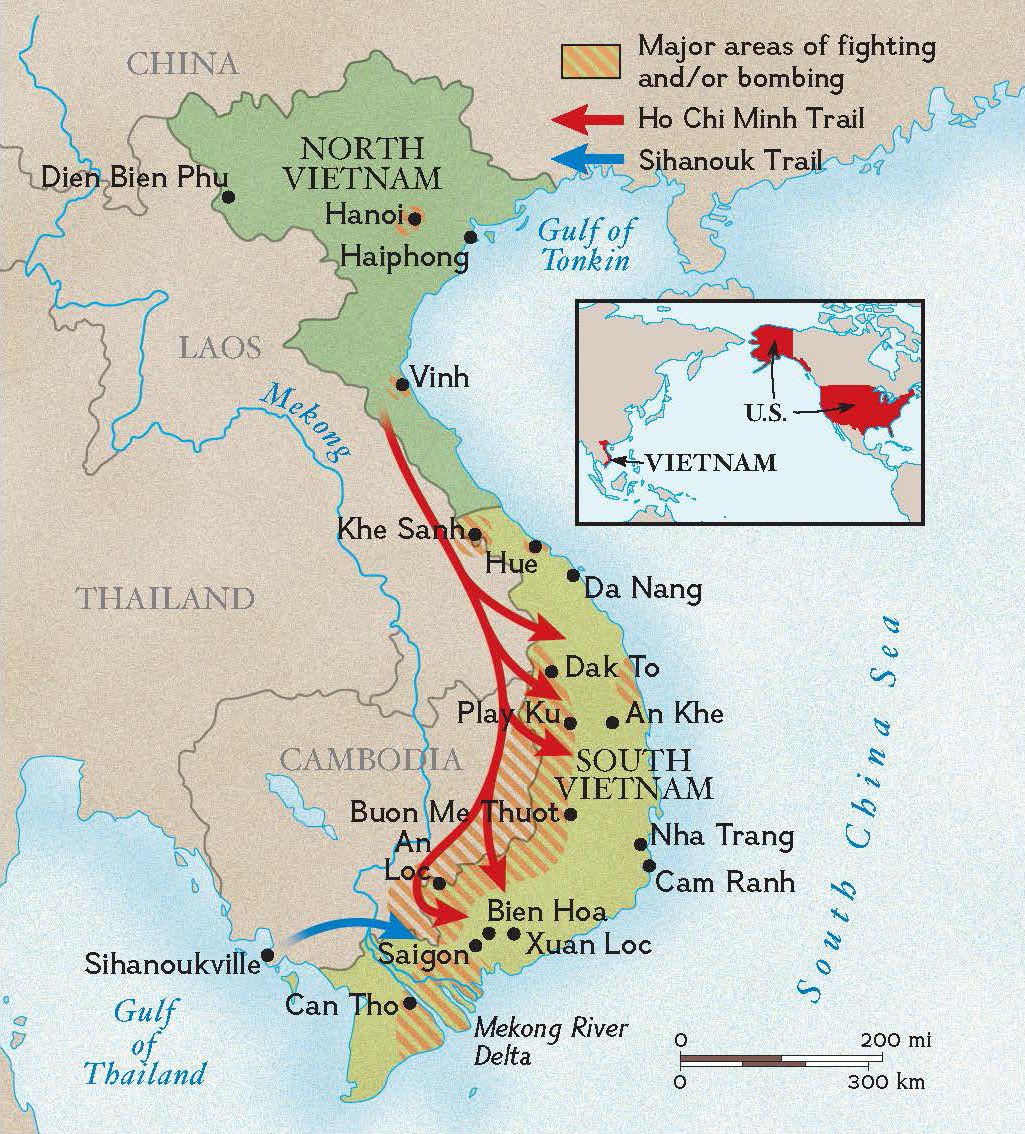

“Vietnam War.” National Archives and Records Administration, National Archives and Records Administration, www.archives.gov/research/vietnam-war#event-/timeline/item/letter-from-ho-chi-minh-to-president-harry-truman.

United States involvement in Vietnam in the 1950s and early 1960s consisted of sending military advisers to help the South Vietnamese in their struggle against Communists in the North. But when it was reported that North Vietnam had fired on U.S. ships in the Gulf of Tonkin, President Johnson responded by bombing North Vietnam and sending in ground troops in 1965. Within three years, more than a half million Americans were fighting in the jungles and cities of Southeast Asia. Communist supplies and troops were carried along two major trails (see map.)
Women in the Vietnam War Though relatively little official data exists about female Vietnam War veterans, the Vietnam Women's Memorial Foundation estimates that approximately 11,000 military women were stationed in Vietnam during the conflict.
Vietnam has always tried to be fiercely independent but was coveted by other nations. The Chinese ruled until the tenth century and introduced their culture, while the people of Vietnam retained their language. In the seventeenth century, French missionaries adapted the language to the Roman alphabet. In 1857, unable to annex Vietnam by diplomatic measures, the French attacked, and by 1883, they controlled the country. Japan ruled during World War II, from 1940 to 1945. After the war, the Vietnamese hoped for independence, but the French returned to “reclaim [their] inheritance.” At the same time, China, by then a communist country, attempted to move in. Through the fifties, US military aid and assistance to non-communist South Vietnam increased.
Vietnam War images
Herb Block
Jules Feiffer
Bill Mauldin
Pat Oliphant
Vaughn Shoemaker
Paul Szep
Edmund Valtman
Clifford H. (Baldy) Baldowski Editorial Cartoon Collection related to Vietnamese Conflict 1961-1975 Digital Library of Georgia
etnam War documents
Table |
Date of Drawing |
Applied to Year of Birth |
APN |
1970 |
December 1, 1969 |
1944-1950 |
195 |
1971 |
July 1, 1970 |
1951 |
125 |
1972 |
August 5, 1971 |
1952 |
95 |
1973 |
February 2, 1972 |
1953 |
95 |
1974 |
March 8, 1973 |
1954 |
95 |
1975 |
March 20, 1974 |
1955 |
95 |
1976 |
March 12, 1975 |
1956 |
95 |